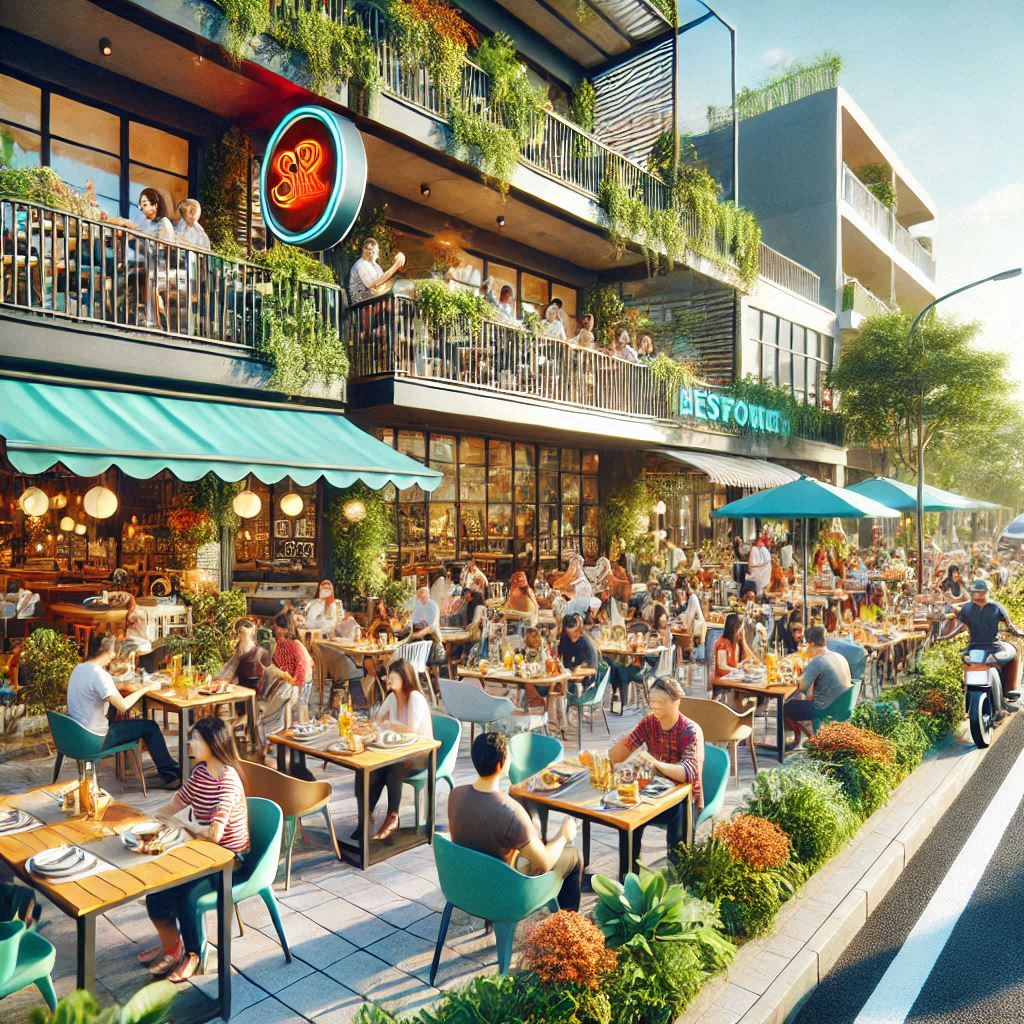The restaurant business is one of the most dynamic and rewarding industries for entrepreneurs. where they can integrate creativity, hospitality, and culinary expertise. However, this is a highly competitive field that requiring the strategic planning, adaptability, and a deep understanding of the taste and preferences of customers. let’s take a look at what makes a successful restaurant business.
Define Your Thought and Target Your Viewers

Every successful restaurant needs a clear and compelling concept. Whether it’s a fine-dining experience, a casual café, or a fast-food joint, your concept needs to resonate with your target audience. Take the time to research market trends and local demographics as well as competitors to identify gaps you can fill.
Key Steps:
- Market Research: know about the likes and preferences, spending habits, and dining trends in your location.
- Unique Selling Proposition (USP): This would determine what will give your restaurant stand out, whether it’s a taste, ambience, or a service.
- Target Audience: Develop your concept cateringto appeal to a specific group, such as families, young professionals foodies, or others.
Place, Location,Position
The location of your restaurant can be very crucial to its success. Choose a place that is easily visible, has much, foot traffic, and accessibility. Proximity to residential areas, offices, or tourist attractions tend to attract more customers.
Considerations:
- Foot Traffic: Areas with much foot traffic tend to expose your restaurant better.
- Parking and Accessibility: Your restaurant should be easily accessible.
- Lease Terms: Evaluate the rental costs and terms to ensure they are within your budget.

Craft an Attractive Menu

Your menu is the heart of your restaurant. It should reflect your concept while offering a balanced in option variety. This means quality over quantity, and consider dietary trends such as plant-based options or gluten-free options, and other similar trends.
Tips:
- Menu Design: Use attractive designs with clear descriptions and pricing should always be indicated.
- Signature Dishes: Highlight items of excellence that remain customer favorites.
- Seasonal Offerings: Rotate dishes throughout the seasons; this keeps menus fresh.
Focus On Your Unique Customer Experience
Hospitality is the cornerstone of a restaurant business. From the time customers step inside, it experience should be memorable and seamless.
Strategies:
- Staff Training: Ensure your team is customer-service oriented and menu-savvy.
- Ambiance: Create a welcoming atmosphere with appropriate lighting, music, and decor.
- Feedback: Ask customers for their views and implement those suggestions constantly to improve.

Accept Technology

Technology can streamline the operations and enhance customer convenience. From online reservations to digital payment modes installed, is a great way to differentiate your restaurant It gets to simplify and make the processes more modern dining experience, setting your restaurant apart from competitors.
Popular Tools:
- Point of Sale (POS) Systems: Simplify billing and inventory management.
- Online Ordering: Enable customers to order online for delivery or pickup.
- Social Media:Utilize social media sites such as Instagram and Facebook to market your restaurant to more people.
Financial Designing and Management
A sound financial plan one of the pillars of sustainability. From initial investments to daily operational expenses, you need to monitor your finances closely.
Essentials:
- Budgeting: Create a budget that accounts for the cost of start-up and operating expenses
- Cost Control: Closely track expenses such as food costs, labor, and utility costs.
- Profit Margins: Maintain regular reviews of profitability and adjust pricing if necessary.

Marketing and Infixing

The most efficient marketing will help attract customers and build your restaurant’s reputation. Focus on creating a strong brand identity related to your audience..
Marketing Ideas:
- Social Media Campaigns: Share enticing food pictures, promotional offers.
- Loyalty Programs: program: rewards or free services to regular customers
- Local Partnerships: Collaborate with local businesses or host events to attract new customers in the restaurant
Prepare for Criticism
Challenges always accompany restaurant businesses, such as shifting customers preferences, staffing issues, and economic changes. Being proactive and adaptable is key to overcoming obstacles.
Tips:
- Contingency Plans: Have strategies in place for unexpected events, such as supply chain disruptions.
- Continuous Learning: Stay updated on industryand what their customers say.
- Resilience: Keep thinking positively and be innovative in times of changes.

Conclusion
Passion, dedication, and a well-thought-out strategy are required to run a successful restaurant. Focusing on your unique concept, delivering excellent customer experiences, and staying attuned to market trends will help you build a restaurant that survives and thrives. Whether you’re starting something new or trying to improve something already in existence, these insights will guide your journey in the exciting world of the restaurant business.
In the world of entrepreneurship, there are two distinct paths that one can choose: businesses for scale and businesses for personal artistry. The former involves ambitious endeavors aimed at rapid growth, expansion, and market domination, while the latter focuses on nurturing… pic.twitter.com/KgptoQiTsV
— VT (@VusiThembekwayo) March 1, 2024
Subscribe to our newsletter!






